
In conversation : Madhu Ambat isc!
Jul 21 2024
In Conversation with Madhu Ambat!
“The colors and light must suit the subject, technology must always blend with the subject, and the camera must bring the internal landscape of the characters.” These words encapsulate the philosophy of Madhu Ambat, a celebrated cinematographer known for his ability to seamlessly merge technology with storytelling.
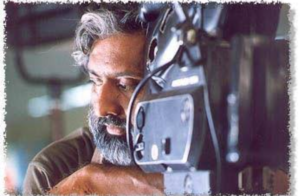
In conversations with Ambat, he emphasizes the importance of cinematography in capturing not just external beauty, but also the nuanced emotions and inner worlds of characters. His work reflects a deep understanding of how visuals can enhance narrative, creating a visual language that resonates with audiences on a profound level.
Madhu Ambat’s illustrious career has earned him three National Awards for Best Cinematography. He has showcased his talent across nine languages and even extended his expertise to Hollywood films. His dedication to his craft and his ability to adapt technology to serve the story make him a distinguished figure in the world of cinematography.
Award Winning Cinematographer Madhu Ambat shares his vast cinematography career with SICA
What gives you more satisfaction, working in a commercial film or an art film?
“I can do a big budget commercial film and then jump into a G V Iyer film.
I enjoyed working with Sanjay Chhel in Khoobsurat. You can do good work in a commercial set-up also.”
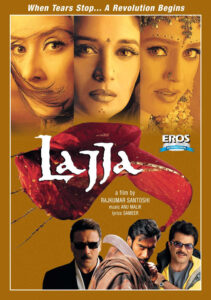
Can you share your experiences working on films like “Khoobsurat” and “Lajja”?
I enjoyed working with Sanjay Chhel in “Khoobsurat.” Even though these are commercial ventures, I find joy in doing them. This compilation captures diverse cinematic experiences. “Lajja” was particularly interesting; Director Rajkumar Santhoshi was a delight to work with. There was a sequence involving 1,000 artists in a single frame, and for that, I used more than 100 baby lights and diffused them to achieve the desired effect.
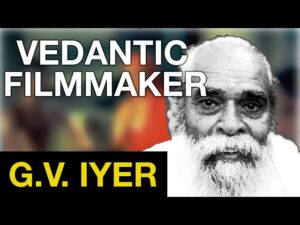
How did your collaboration with G. V. Iyer impact your career trajectory?
Working with G. V. Iyer was a turning point for me. It was a period of creative fulfillment where I could fully express my cinematographic vision and skills.
How did your career in cinematography begin to flourish after your time at the Film Institute?
After graduating from the Film Institute, Pune, I was fortunate to win the ORWO merit scholarship for all three years, which provided a solid foundation for my career. I started with projects like the Tamil film “Avanai Chutri” and collaborated with director Shaji Karun on notable films such as “Gnaval Pazhangal”, “Manushyan”, and “Lehren”.
Who were your early influencers in your journey as a celebrated Director of Photography?
I could say my days at FTII Pune were profoundly impactful, immersing myself in reading about cinema and exploring its various facets. I was greatly influenced by the works of David Lean and the exceptional cinematography of Freddie Young. Additionally, European film DOPs like Sven Nykvist and Vittorio Storaro played a significant role in shaping my vision. Eventually, I developed my own unique thought process, blending these influences with my personal experiences and insights.
How do you frame your visual approach when working on a film?
I begin by thoroughly reading the script. Some scenes in the screenplay immediately evoke visuals in my mind as I read. I then connect these initial visual ideas to other scenes, forming a cohesive circular concept. From there, I delve deep into the internal landscape of the characters, aiming to convey their emotions and journeys through lighting, composition, colors, and camera movements. This holistic approach allows me to create a visual narrative that enhances the storytelling.
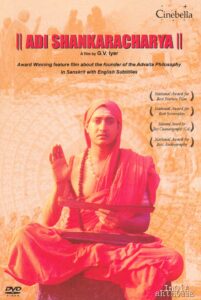
You collaborated extensively with GV Iyer on films like Adi Shankaracharya, Bhagavad Gita, and Madhvacharya. What was your take on these projects?
As I mentioned earlier, I have a great rapport with GV Iyer. Despite being a non-religious person, I approached these projects from a philosophical standpoint, which allowed me to bring a unique perspective to the films. This approach added a layer of realism and depth, enhancing the storytelling and making the visuals more profound and meaningful.
Madhuvacharya story is based on a saint, so Director GV Iyer wanted us not to use any props and show emptiness, art director Krishnamurthy came up with a brilliant idea of drawing spiritual Kolam( Rangoli) in the interiors.
Your cinematography for Bharathan’s Vaishali was stunning and authentic. How did you achieve this?
Basically, Bharathan is a painter, so he understands colors very well, making it easy to experiment with them. For Vaishali, I used Van Gogh’s yellow as the color scheme to convey the sense of drought within the visual narrative. Additionally, I employed extreme long shots to capture spectacular views and enhance the overall impact of the film’s visuals.
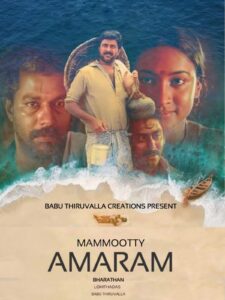
Chemeen was a masterpiece in terms of visuals. How did Amaram differ in its visual approach?
Madhu Ambat: Chemeen is indeed a masterpiece, but with Amaram, I aimed for a different visual approach. I wanted Amaram to be more realistic and sober while still capturing the vastness of the sea. To achieve this, I filmed close to the characters and shot many scenes from a small boat with a one-man crew. Mammootty himself rowed the boat during these scenes, which added an authentic touch to the visuals and allowed for intimate yet expansive shots.
You had a long association with Director Bharathan. Can you tell us about it?
Yes, we did nine films together. After Bharathan’s demise, it created a void in me, and it took nearly twelve years before I worked on another film in Malayalam. His passing was a significant loss, both personally and professionally.
Which film was the most challenging for you in terms of cinematography?
Each film has its own challenges, but for me, one of the most challenging was a song from the Telugu film Thammuddu. Actor Pawan Kalyan wanted everything in the frame to be black—costumes, backdrop, and even makeup. To ensure the images didn’t merge into a single dark mass, I had to light the scenes in a very different and creative way to bring the images to the forefront.
What was the technique behind it?
I aimed for multiple diffusions to achieve the desired effect. This technique allowed me to separate the different elements within the frame and bring the images to the forefront without them merging into a single dark mass. It required precise and creative lighting to maintain the visual clarity and impact.
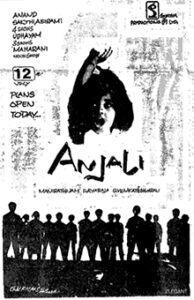
Can you share some interesting trivia about Mani Ratnam’s film Anjali?
Anjali was a fascinating project with Mani Ratnam. The film centered around a special girl child who is about to die, and we aimed to create an angelic feel for her character. To achieve this, we used strong backlighting in a low-key atmosphere, which was quite innovative for mainstream cinema at that time. Additionally, for the space journey scenes, I employed a go-motion technique using a black screen, as green and blue screen techniques were not available back then. Working with Baby Shamili was a joy—she was fantastic, and I thoroughly enjoyed shooting with her.
I also can’t forget the color timing days at Prasad Lab with grader Ponnaiyan. We would walk a distance early at 4 AM near Prasad Film Laboratory to drink tea, which would appear in various colors. It was a delightful and memorable experience.
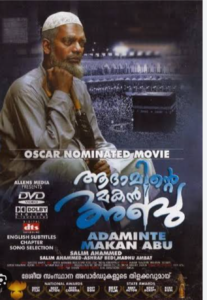
Was “Adaminte Makan Abu” (2011) shot in a digital format, and did it win the National Award for Best Cinematography?
Yes, “Adaminte Makan Abu” was shot in a digital format and won the National Award for Best Cinematography.
What was your initial plan for the format of “Adaminte Makan Abu,” and why did you change it?
Initially, I planned to shoot in 16mm format. However, I was concerned that the sharpness of the image would be compromised in wide shots, so I decided to shoot in digital with the ARRI D21 camera instead.
How did you ensure precise exposure control while shooting in digital format?
I calibrated my monitor based on waveform and RGB parade for exposure control and consistently used a light meter to ensure precision.
How did your approach to digital format impact your filmmaking process?
Embracing the digital format made me comfortable with the technology, allowing me to fully leverage it without compromising my artistic vision.
What recognition did “Adaminte Makan Abu” receive?
Adaminte Makan Abu” won numerous awards and was India’s official entry for the Best Foreign Language Film at the Oscars.
Does nature play an important element in your films?
Yes, nature is an essential element in my films. I love the influence of Andrei Tarkovsky over his frames using natural elements. He used to say, “breathe the wind,” which resonates deeply with me and inspires my approach to incorporating nature into my work.
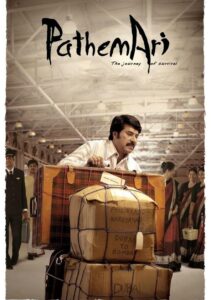
Did your visual pattern for the 2015 film “Pathemari” have an unusual style?
Yes, the visual pattern for “Pathemari” had a unique style. I shot the past scenes with a regular color pattern to reflect the ambitious life of the characters. As the story progressed, the colors gradually desaturated, ultimately ending in black and white. This visual transition symbolized the changes and challenges faced by the characters over time.
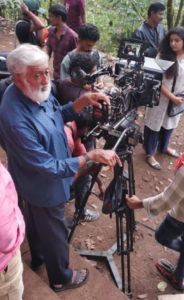
Can you share your recent Telugu film shooting experience?
My recent Telugu film is currently untitled, and we shot it in a quick span of time in a single schedule. For this film, I used negative space in the frame for composition to add a thematic appeal. Since the characters’ past is important, I decided to give more room behind the frame, creating a visual representation of their past and experiences.
After directing the English feature film titled “1:1.66: An Ode to Lost Love” in 2016, what is your next directorial film?
There are two scripts already completed. One is titled “Death of Madhu Ambat”, which will also be released as a novel.
Article by CJ Rajkumar
Author/ Cinematographer
